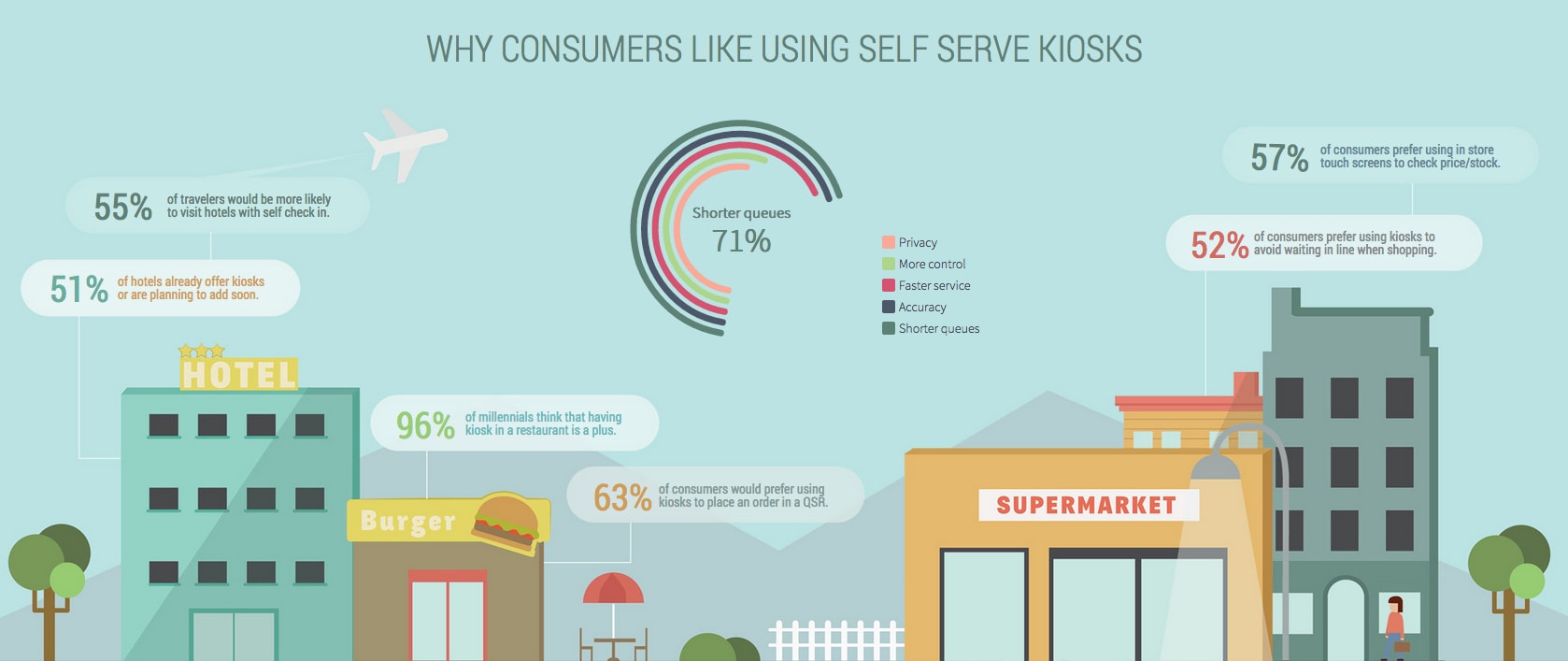How do Self-Service Kiosks transform your business?
Self-service kiosks save money and make your checkout more efficient. But that’s nothing compared to how they transform customer behavior.
Self-service kiosks are a growing trend in retail stores, restaurants and other customer-facing businesses. Many business owners look at kiosks as a simple choice between staff and technology, with all the potential cost savings that a smaller staff size brings. While this view is accurate, it only captures part of the picture—self-service kiosks actually change customer behavior, completely transforming your business.
To understand how this works, let’s take a look at a typical self-serve kiosk. Most involve a touchscreen interface and help customers check out without speaking to a cashier. The same setup can be adapted for clinics, law offices and other settings where customers may need to complete paperwork or sign in for an appointment. The technology allows the customer to do everything themselves—quickly.
That has some major changes on customer behavior:
- Customers get to be as picky as they want. Most of us have fairly specific preferences about the things we buy, especially food at restaurants. But when you order from a live person, placing a complicated custom order feels like inconveniencing someone. As a result, customers using self-service kiosks tend to choose more custom options and add-ons, even when they cost more money. This is an example of a win-win for the consumer and the business, increasing customer satisfaction while also driving sales.
- Customers choose options they might not consider with a live person. When restaurant customers place orders through a touchscreen at their table, they are more likely to order dessert after their meal. The reason is simple: the self-service model eliminates the chance of looking like a glutton in the eyes of the server. The kiosk allows them to have their cake and eat it too, without any guilt.
- There are lower barriers to customer transactions. Self-service kiosks mean shorter lines, less chit chat, and total freedom to text or listen to podcasts while buying your latte. Customers appreciate all three of these conveniences. The bottom line is that the kiosks make it easier to go into a business, get what you want, and get out again.
Other interesting case examples we’ve seen include:
- Liquor store customers bought more products with hard-to-pronounce names once the store when self-service.
- McDonald’s found that the average sale rose by €1.00 per order when customers were given a self-service checkout, with frequent upsells on beverages. This was a 30% increase.
- Cinemark theaters have seen concession sales increase every quarter for eight years since offering self-service.
These numbers aren’t proof that self-service is always good. There are times when a human touch, or the value of face to face interaction, improves service or makes the customer value your service more. There are also situations where a business will want to balance the use of technology with customers’ preferences—especially if your market skews toward an older audience. Overall, however, self-serve kiosks seem to remove a barrier between customers’ wants and closing the sale.
Should your business go self-service? It depends. It’s a powerful option to give customers, and it can often be deployed alongside traditional checkouts. But every business has its own unique needs. What would a self-service option look like for your business? Would it be an app, an online ordering feature, or a physical touchscreen in store? Could it deliver more value for your customers? Contact us today to discuss how Self-service kiosks can help your business.








